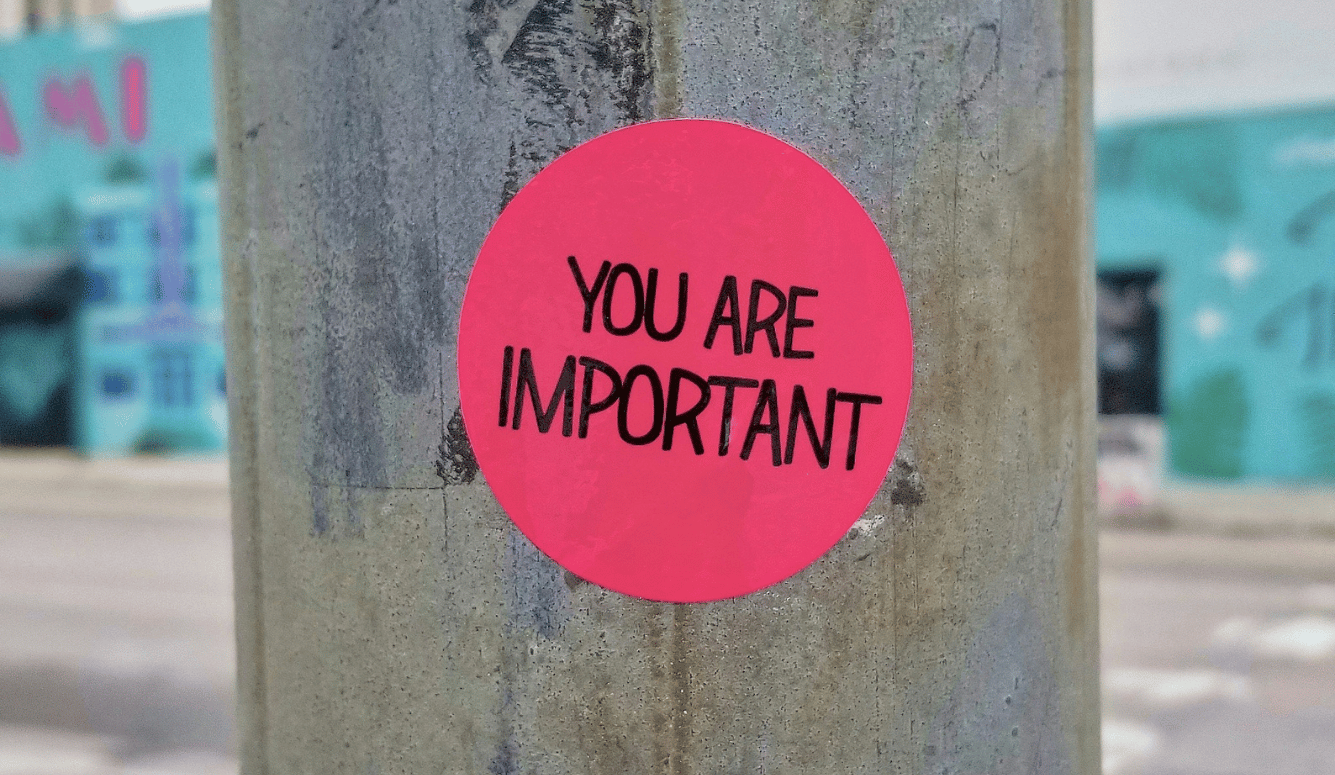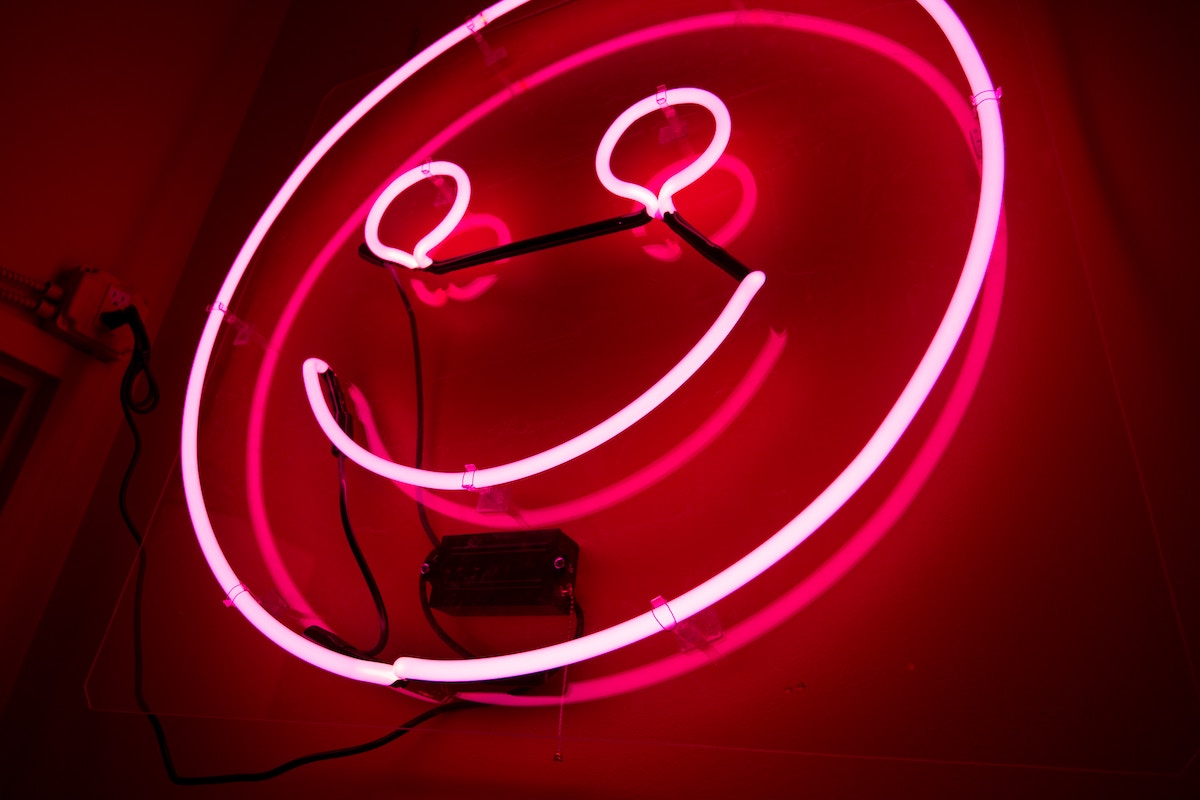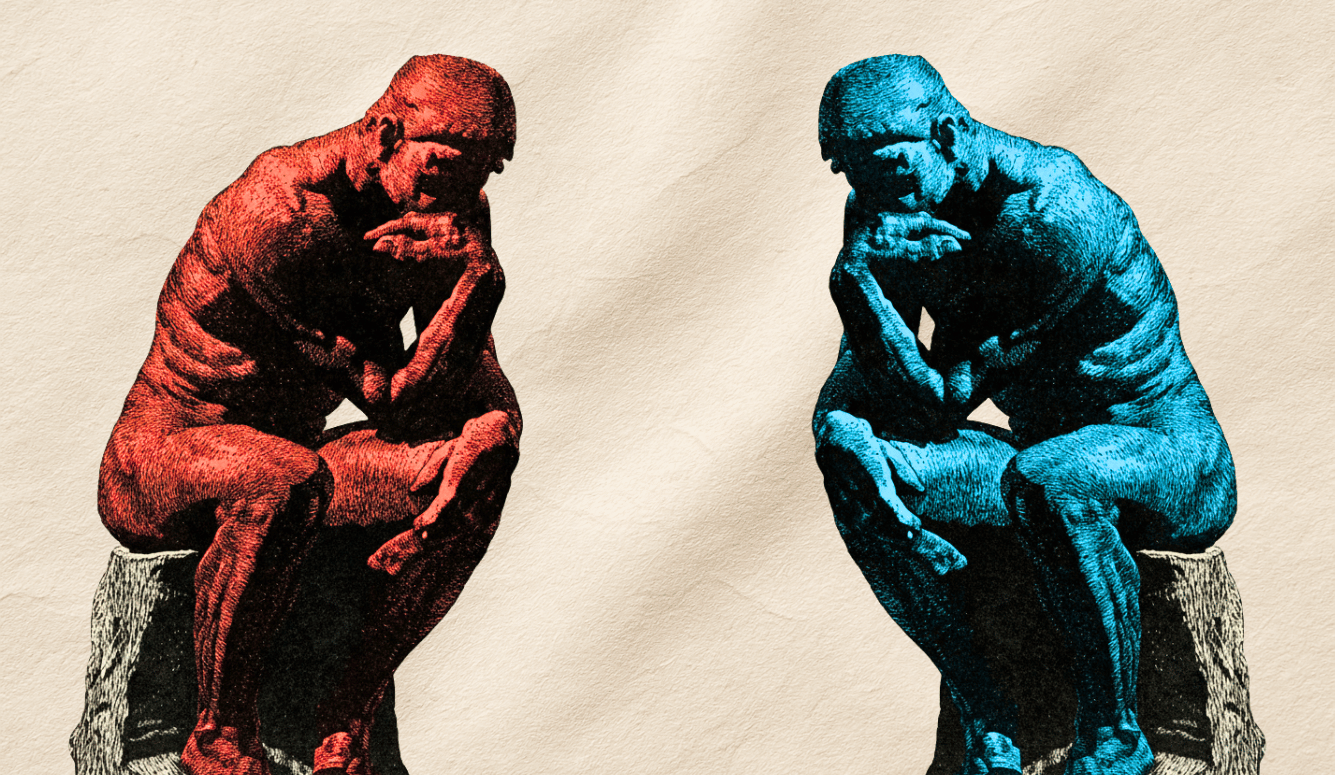Politics
Pride and Prejudice
The self-esteem movements that once deranged America’s school curricula have since deranged the realm of identity activism.

I. Scholastic Self-Esteem
In the early 1980s, motivational guru Jack Canfield and progressive California assemblyman John Vasconcellos forged a landmark alliance after both men arrived at the same conclusion about failing and demoralised students. Everybody, they decided, had been looking at the problem backwards. Lousy grades did not produce low self-esteem in kids, low self-esteem in kids produced lousy grades. To Canfield and Vasconcellos, self-esteem was the obvious and necessary precondition for scholastic achievement.
Technically, self-love had been a cornerstone of the American human-potential movement since the early 20th century and Dale Carnegie, although such thinking fell out of favour during the Greatest Generation, which rejected self-interest as a principal motivation in life. Then came the mid-’60s and the rise of “victimisation theory” via books like I’m OK, You’re OK and the reanimation of Carl Jung’s 1920s concept of the inner child (or the “wounded” inner child, as John Bradshaw later put it). Victimisation basically argued that children enter life “OK” only to be ruined by that horrific incubator of dysfunction known as the family.
Around this time, the educational vanguard also got wind of the Rosenberg Self-Esteem Scale (RSES), a ten-question diagnostic developed in 1965 by NIH sociologist/researcher Morris Rosenberg. Working from such influences, Montessori schools and other more innovative K-12 private schools theorised that it was up to them to succeed in self-actualising kids where mom and dad had clearly failed. Then Canfield and Vasconcellos picked up the ball, and under their aegis, self-esteem-inflected education spread statewide and then across the nation like a contagious new cultural fad. Based on little but theory, this movement was widely hailed as a self-evident panacea for what ailed second-rate students, and the ensuing effort to prop up students’ self-confidence transformed public education in ways large and small.
Psychologist and columnist John Rosemond—an instant critic of this new approach—wrote about an Alabama school district with some of the worst test scores in the nation. As kids disembarked school buses to enter school each day, they saw themselves in a full-length mirror that assured each of them in turn, “You are now looking at one of the most special people in the whole wide world!” Not to be outdone, schools in one New Mexico district began the day with this anthem:
I feel good about me
I feel good about me
Me is something
It is very good to be.
The solecisms were symbolic of administrators’ commitment to placing other priorities before basic education (why let grammar stand in the way of cute phrasing?) and foreshadowed a disinclination to correct ethnic or regional locutions (“we ain’t” or “he don’t”). After all, reprovals might make students feel self-conscious and/or that their cultures were under attack. So, in defiance of all logic and common sense, American schools enshrined a “no limits” culture. Weekly assemblies assured cohorts of thousands of grade-schoolers that each of them could be US president or—if they preferred—Michael Jackson.
Corrections in red ink were deemed upsetting and stigmatising (nearby students might notice) so they had to go. The most radical educational theorists pressed for the implementation of pass/fail grading or the elimination of grades altogether; the former measure gained some traction. New guidelines discouraged teachers from celebrating superior students or their work lest it bruise the egos of mediocre peers. Instead, teachers set simple class exercises and then dispensed lavish praise (“you’re all a bunch of geniuses”) for their completion. Schools scrapped competitive games likely to produce winners and losers. Now everybody won! The (much-satirised) participation trophy appeared. Redrafted policies asked schools not to banish disruptive students—since their problem was a negative self-image, punishing them would only make it worse. Nothing could be permitted that discomfited children, let alone forced them to confront their own shortcomings. In parent-teacher meetings, parents were urged to be mindful of their kids’ delicate feelings at home. Canfield, Vasconcellos, and other early adopters took victory laps.
But then the results came in. Seldom has a major cultural initiative gone more catastrophically awry. At the turn of the millennium, books began to appear analysing the disastrous stew of unintended consequences wrought by the self-esteem movement, including The Feel-Good Curriculum by Maureen Stout (in 2000), The Narcissism Epidemic by Jean Twenge and Keith Campbell (in 2009), and SHAM, my own contribution to the discussion (in 2005).
SATs and other standardised test scores plummeted. When grim district-wide scores were first reported, dogmatic administrators simply tossed the scores out to protect students’ feelings and the district’s image. In a masterstroke of tendentious reasoning, they blamed the stress induced by testing for poor test scores. A nation that had historically performed well in international competitions suddenly found itself, by 1998, just four places from the bottom. Despite a general reluctance to flunk anyone, high-school graduation rates began a steady decline and did not recover until 2003 (by which time, many schools were rethinking their commitment to self-esteem). With penalties largely off the table, school violence and truancy ticked up.
Then there was the psychological effect of this grand social experiment on millions of little lab rats to consider. The constant coddling in too many cases created, instead of strivers, arrogant little shits who were complacent if not defiant about declining performance—and yet at the same time were uniquely fragile, rocked by setbacks of any kind. And this tandem sense of entitlement and fragility did not disappear when diplomas were conferred.
None of which shocked those who had been in the trenches and actually studied self-esteem for a living. Like Roy Baumeister, for instance, arguably academia’s best-known authority on self-regard. Baumeister had been an early voice in the wilderness, pointing out that high levels of self-esteem were positively correlated with pursuits like serial killing and gang-banging. (A second critic of the self-esteem juggernaut, philosopher/theologian Albert Mohler, would later summarise Baumeister’s findings like this: “Highly aggressive, violent people happen to think very highly of themselves, debunking the theory that people are aggressive to make up for low self-esteem.”) Even in less extreme cases, noted Baumeister, a surfeit of self-regard could produce poor social outcomes.
Dismayed by the disjunction between expectations and results, the Association for Psychological Science commissioned Baumeister to conduct an exhaustive literature review in 2003 to determine whether or not research had been rigged and red flags ignored. He concluded that just 200 of 15,000 studies and scholarly articles—a mere 1.3 percent—met rigorous criteria for validity and repeatability. This represented a turning point. By debunking these studies, Baumeister derailed the movement.
But dreams die hard, and the concept of redemptive self-esteem was too appealing to discard. So, as schools reconsidered their commitment to the movement, institutional interests tried their damnedest not to let go. Even twenty years after Baumeister’s damning report, the American Psychological Association, long-time self-esteem evangelists (and one of the wokest forces in American society), released a retrospective meta-study that is a clinic in positive thinking for most of its length. But then something—a conscience attack or a nod to the risks of peer review—led them to write a most curious conclusion.
It begins optimistically enough:
The present findings support theoretical conceptions of self-esteem as an adaptive trait that has wide-ranging influences on healthy adjustment and adaptation, and suggest that interventions aimed at boosting self-esteem might benefit individuals and society as a whole.
But then come the caveats:
However, researchers, practitioners, and the public should be careful not to make the same mistakes that occurred during the self-esteem movement of the 1970s. Most notably, self-esteem interventions should not be introduced in schools and other contexts until we have more robust knowledge about how self-esteem can be improved on a sustained basis and which interventions are effective in which situations and for which individuals. Several other caveats must be considered when developing and implementing self-esteem interventions. First, self-esteem boosted by interventions may not provide the same benefits as naturally occurring high self-esteem. Second, self-esteem interventions might backfire, if they end up increasing narcissism rather than authentic self-esteem. ... Fifth, a deeper understanding of the interpersonal and intrapersonal mechanisms that account for the benefits of high self-esteem is needed to improve the design of effective interventions. Finally, self-esteem interventions that are effective in research contexts may not scale up to population-level interventions.

II. Pridentity
Unfortunately, the self-esteem movement and its underlying precepts did not remain confined to education, even after they produced dismal outcomes there. Soon, this kind of thinking became a staple of activism evidenced by slogans like The future is female! and Black is beautiful! and Rainbows reign! Autism activists, meanwhile, adopted Why fit in when you were born to stand out? and Embrace the amazing!
Today, America is awash in what one might call “pridentity,” preached by the self-esteem movements that have coalesced around race, gender, sexual orientation, disability, and even weight. Though we’re most familiar with groups that advocate for women, blacks, and gays, that’s hardly the full pridentity spectrum. Over time, core activist groups have splintered into a vast array of sub-interest groups, in much the way that trans pride has broken from (and is sometimes in conflict with) gay pride and always at loggerheads with feminism’s gender-critical wing. The all-purpose “LGB” coalition has now metastasised into LGBTQQIAAP+, so that every sub-faction receives its due recognition. The initialism can also be resequenced according to emphasis or the place each letter occupies in the intersectional pecking order. Facebook lists more than fifty gender boxes for users to check, any number of which have their own pridentity affiliations.
While it’s difficult to ascertain the degree to which such movements drew upon the self-esteem catechism, the broad rationale is the same: the cure for the manifold afflictions of the newly emergent groups is mega-dosing with self-love. Pridentity movements also share the foundational Canfield/Vasconcellos belief that pride is a birthright, not earned but simply conferred. I exist, ergo I am proud. Just as the schoolchildren of the self-esteem movement were entitled to feel good about themselves whether they were earning As or Fs, members of self-declared identity groups are entitled to feel proud of who and what they are, regardless of their life circumstances and accomplishments (or lack thereof).
Importantly, pridentity movements share a second feature that’s endemic to all endeavours in the human-potential world—they trade in superlatives. There’s no faint praise in pridentity. Like scholastic self-esteem, pridentity is about wonderful and beautiful and coming out on top and unlimited potential and deserving of the best life has to offer. To some degree, this was inevitable; slogans with commonsensical or realistic aspirations lack the power to stir souls. But some observers recommend an alternative known as “humble pride,” which puts the focus back on doing instead of just being:
Humble pride makes no assumptions about the outcomes you supposedly deserve. You put in the effort, knowing that the outcome is outside of your control. You may or may not be rewarded for your hard work. You might receive good luck or bad. The job, promotion, or contract could go to someone else. You could lose the election. All you can control is whether or not you do your best. ... Humble pride is quiet. It lets effort and accomplishment speak for themselves.
But this is precisely why pridentity advocates reject the whole idea of humble pride. Linking pride to demonstrable achievement is “disempowering,” they insist, especially since they maintain that measures of achievement rely on standards developed and enforced by an oppressive majority or out-group. Humble pride, in short, is insufficiently transformative to offset the generational effects of systemic oppression.
And so, instead, ballsy sweatshirts announce that the wearer is Black AF, women roar, obese women declare that curves are my superpower and I’m invincible, and identity pitchmanship of all stripes is configured to make each group’s members feel like the chosen ones. Pridentity leaders urge members to stand before a figurative mirror like the one that greeted those Alabama schoolchildren, affirming their marvellousness. This is not necessarily good news for society. As Shelly Johnson, Georgetown College professor and educational leadership consultant, blogs:
While tribalism helps people meet various needs, it can also encourage various forms of superiority complexes. This leads certain tribes to believe that they (and the folks in their tribe) are better than people in other tribes.
Groups may build themselves up by diminishing others. Feminists sometimes argue that women are superior to men in intelligence, social skills, crisis management, and so forth. This isn’t sexism, they say, just a recognition of biological reality. This claim inevitably segues into the denigration of men, manhood, and masculinity. There is, we are told, something wrong with men, and traits identified with masculinity have become evidence of congenital toxicity. As Christina Hoff Sommers has pointed out, this induced school systems, long influenced by feminised thinking anyway, to embrace the notion that little boys are actually defective little girls. Sommers and others allege that this school of thought has done incalculable damage to the psyches of young men.
Elsewhere in the identisphere, we find whiteness denigrated alongside the uncritical celebration of almost every other ethnicity and race. By the time of the Trayvon Martin killing in 2012, academia was offering coursework in the singular depredations of white culture, while at least one museum drew up guidelines stipulating that “aspects and assumptions of whiteness” in America included hallmarks like rational thought, punctuality, and hard work. In 2018, the New York Times refused to fire a new member of its editorial board after it emerged that she had posted a series of vitriolic tweets about white people, even after the same paper quickly “parted ways” with another new hire because her tweet history had outraged minorities.
Just as the self-esteem movement championed a climate of “everybody wins”—or nobody loses—pridentity movements embrace a postmodern notion of egalitarianism that demands equal outcomes. This is justified by the barriers to achievement posed by meritocratic practices supposedly rigged against certain groups. Making black America whole again, for instance, calls for the forced implementation of successes that might never happen organically, given the structural barriers to black achievement. This was the moral imperative behind naked affronts to basic fairness like affirmative action, DEI, and restorative justice. Making women equal likewise required the flexing of accepted standards in realms like police work and the military. The traditional height standard in police work would have eliminated most women, so it had to go; ditto various fitness requirements in military basic training.
Sustaining the feel-good vibe would require a good deal of rationalising, and even expedient re-imaginings of history and anthropology. Papers have begun to appear that “centre” women in world history, supposedly refuting the hunter-gatherer roles allotted to the sexes in pre-civilised societies. Alternative versions of American history are presented, some of which seem to imply that women had as much to do with the founding as the Jeffersons and Franklins. Black activists create false narratives around black ingenuity and black history as a whole. All of which dovetails nicely with the purposes of the self-esteem movement. As historian and educational-policy analyst Diane Ravitch has written:
Some people in the education profession believe that history (or social studies) should have as its central purpose the boosting of children’s self-esteem and ethnic pride. The effort to do this, I believe, opens a Pandora’s Box from which fly exaggeration, falsification, ethnic antagonism, censorship, and infringement of academic freedom. The effort to satisfy demands for ethnic self-esteem leads not to multiculturalism but to ethnocentric curricula.
And fly the exaggerations and falsifications do. They range from overstating black involvement in a given innovation (Alexander Miles did not invent the elevator, but rather its automatic doors; Jesse Russell contributed to cellular technology but did not invent the smartphone) to revisionist histories like the 1619 Project, a yarn spun in the guise of a history text, which frames the American success story as a direct function of slavery.
Ravitch goes on to note that when California educators adopted new history texts in the late 1980s, they insisted that the portrayal of ethnic groups “in the books must be laudatory, and all individuals must be inspiring role models, otherwise the group might be defamed and subject to negative stereotyping.” An enterprise consecrated to self-love cannot abide attacks on the self, so just as scholastic self-esteem frowned on red ink and punishment, pridentity movements reject criticism of their collective selves as disempowering.
Criticisms from outside the group are seldom evaluated on their merits. More often they are simply dismissed as unwelcome and illegitimate infringements with the words, “Stay in your lane.” Pridentity leaders behave as if an attack on one is an attack on all, and such attacks must be projected back on the oppressing out-groups. Thus, we were assured that misogyny defeated Hillary Clinton in 2016 (see also here) and that misogyny and racism undid Kamala Harris in 2024 (also here). Pridentity elites who run into trouble are “being persecuted” for their identities. When Donald Trump announced his desire to fire Federal Reserve governor Lisa Cook, Democratic Leader Hakeem Jeffries felt compelled to key his defence of Cook to the fact that she “is the first Black woman ever to serve on the Federal Reserve Board of Governors.” Jeffries mentioned no other credentials. Similarly, criticism of leading gay-rights figures incites accusations of homophobia and “erasure.”
Group members who break ranks face excommunication for their apostasy. Women who reject elements of the full feminist creed may be declared guilty of internalised misogyny. In LGBT circles, the analogous crime is internalised homophobia, a charge unknown to many Americans until the New Yorker had to explain why Pete Buttigieg “is not gay enough” for some queer advocates. Black conservatives, meanwhile, are shunned and/or dismissed as Uncle Toms; ask Clarence Thomas or, more recently, Byron Donalds. No less a distinguished American than Barack Obama seemed to be chastising black men whom he suspected of betraying black women and even blackness itself by “sitting out” the 2024 election.
All of which has the effect of not only enforcing a blind orthodoxy but undercutting individual responsibility. Still, few have taken this as far as Black Lives Matter, which declares unflinchingly on its welcome page, “We envision a future fully divested from police, prisons and all punishment paradigms.” Because punishment connotes wrong-doing, and wrong-doing has no place in the love of blackness.

III. The Victimisation Identity
There is an apparent paradox at the centre of pridentity that distinguishes it from self-esteem dogma: members of pridentity groups are trained to think of themselves as both infinitely capable and forever-victims. This is particularly evident in feminism, which casts women as omnipotent but also in need of constant protection from society and men. However, pridentity and self-esteem movements both confound the success they promise. For just as the children of self-esteem education were left unprepared for a post-scholastic life of conformity and disappointment, pridentity’s emphasis on psychological and sociological victimhood undermines the movement’s promise of social ascendancy.






